An Electro-Geometric Model for Lightning Shielding of Multiple Wind Turbines
Abstract
:1. Introduction
2. EGM of Lightning Shielding Between Multiple Wind Turbines
2.1. The Principle of Lightning Shielding Between Multiple Wind Turbines
2.2. Calculation of Space Potential Around the Wind Turbine Blade
2.3. Numerical Calculation of the Striking Distance of the Blade Tip Receptor
3. Impact of Environmental Factors on the Maximum Shielding Distance of Two Turbines
3.1. Relationship Between Dmax and Pressure, Temperature and Humidity
3.2. Relationship Between Dmax and Altitude
4. Long Gap Breakdown Experiment for a Scaled Wind Turbine
5. Conclusions
Acknowledgments
Author Contributions
Conflicts of Interest
Nomenclature
| θ | Angle between the blade and horizontal direction |
| p | Charge density of the lightning leader channel |
| γ | Absolute humidity |
| γ0 | Standard absolute humidity |
| δ | Relative air density |
| τ | Distance from a point of downward leader channel to the leader head |
| Φ | Electric potential |
| μn+ | Ion mobility of small particles |
| μN+ | Ion mobility of large aerosol particles |
| ε0 | Dielectric constant of air |
| d | Particle diffusion rate |
| D | Spacing between two wind turbines |
| e | Charge of elementary charge |
| Electric field intensity | |
| E∞ | Steady-state value of quasi-static leader field intensity |
| Estr | Electric field intensity of the streamer area |
| HL | Altitude |
| Ip | Lightning current amplitude |
| knN | Binding coefficient of small particles and large aerosol particles |
| KQ | Environmental factor |
| l | Length of the upward leader |
| ls | Total length of upward leader and streamer |
| Lf | Horizontal shielding distance of turbines at a certain angle |
| Ls | Overlap distance |
| n | Equivalent thunderbolt frequency |
| n+ | Concentration of small charged particle |
| N+ | Concentration of large charged aerosol particle |
| Na | Concentration of neutral aerosol particle |
| P | Atmospheric pressure |
| P0 | Standard atmospheric pressure |
| R | Length of turbine blade |
| Rp | Striking distance of blade tip receptor |
| T | Temperature |
| T0 | Standard temperature |
| U1 | Background potential |
| U2 | Distorted potential considering corona area charge |
| Ud | Potential of downward leader head |
| Utip | Potential of blade tip receptor |
| x0 | Length coefficient |
| z0 | Height of lightning leader head |
References
- Wind turbines—Part 24: Lightning protection; IEC 61400–24:2010; International Electrotechnocal Commission: Geneva, Switzerland, 2010.
- Guo, Z.X.; Li, Q.M.; Yan, J.Y.; Ma, Y.F.; Siew, W.H. Summary of Research on Physical Evolution Mechanism of Lightning Discharge of Offshore Wind Farms. J. Electr. Eng. 2015, 10, 10–19. [Google Scholar]
- Frandsen, S.; Barthelmie, R.; Pryor, S.; Rathmann, O.; Larsen, S.; Højstrup, J.; Thøgersen, M. Analytical modelling of wind speed deficit in large offshore wind farms. Wind Energy 2006, 9, 39–53. [Google Scholar] [CrossRef]
- Patel, M.R. Wind and Solar Power Systems: Design, Analysis, and Operation; CRC Press: Boca Raton, FL, USA, 2005. [Google Scholar]
- Mosetti, G.; Poloni, C.; Diviacco, B. Optimization of wind turbine positioning in large windfarms by means of a genetic algorithm. J. Wind Eng. Ind. Aerodyn. 1994, 51, 105–116. [Google Scholar] [CrossRef]
- Grady, S.A.; Hussaini, M.Y.; Abdullah, M.M. Placement of wind turbines using genetic algorithms. Renew. Energy 2005, 30, 259–270. [Google Scholar] [CrossRef]
- Muto, A.; Suzuki, J.; Ueda, T. Performance comparison of wind turbine blade receptor for lightning protection. In Proceedings of the International Conference on Lightning Protection (ICLP), Cagliari, Italy, 13–17 September 2010. [Google Scholar]
- Montanyá, J.; March, V.; Hermoso, B.; Hermoso, J.R. Highspeed videos of laboratory leaders emerging from wind turbine blade tips. In Proceedings of the International Conference on Lightning Protection (ICLP), Cagliari, Italy, 13–17 September 2010. [Google Scholar]
- Garolera, A.C.; Holboell, J.; Madsen, S.F. Lightning attachment to wind turbine surfaces affected by internal blade conditions. In Proceedings of the International Conference on Lightning Protection (ICLP), Vienna, Austria, 2–7 September 2012. [Google Scholar]
- Li, D. 3D Simulation of the Lightning Leader and its Application; Chinese Academy of Meteorological Sciences: Beijing, China, 2013.
- Mengni, L.; Marley, B.; Rajeev, T. On the Lightning Incidence to Wind Farms. In Proceedings of the International Conference on Lightning Protection (ICLP), Estaril, Portugal, 25–30 September 2016. [Google Scholar]
- Becerra, M.; Cooray, V. A self-consistent upward leader propagation model. J. Phys. D Appl. Phys. 2006, 39, 3708. [Google Scholar] [CrossRef]
- Becerra, M.; Cooray, V. A simplified physical model to determine the lightning upward connecting leader inception. IEEE Trans. Power Deliv. 2006, 21, 897–908. [Google Scholar] [CrossRef]
- Armstrong, H.R.; Whitehead, E.R. Field and Analytical Studies of Transmission Line Shielding. IEEE Trans. Power Appar. Syst. 1968, 87, 270–281. [Google Scholar] [CrossRef]
- Brown, G.W.; Whitehead, E.R. Field and Analytical Studies of Transmission Line Shielding: Part II. IEEE Trans. Power Appar. Syst. 1969, 88, 617–626. [Google Scholar] [CrossRef]
- Rakov, V.A.; Uman, M.A. Lightning: Physics and Effects; Cambridge University Press: Cambridge, UK, 2003. [Google Scholar]
- Amoruso, V.; Lattarulo, F. Thundercloud pre-stroke electrostatic modeling. J. Electrost. 2002, 56, 255–276. [Google Scholar] [CrossRef]
- Cooray, V.; Rakov, V.; Theethayi, N. The lightning strike distance-revisited. J. Electrost. 2007, 65, 296–306. [Google Scholar] [CrossRef]
- Winter, A.; Kindersberger, J. Transient field distribution in gas-solid insulation systems under DC voltages. IEEE Trans. Dielectr. Electr. Insul. 2014, 21, 116–128. [Google Scholar] [CrossRef]
- Hu, J.L.; Hong, C.; Du, L.; Mi, Y.; Sun, C.X. Simulation study on electric field of a long rod-plane air gap during leader discharge based on weak form of finite element method. Proc. CSEE 2008, 28, 148–154. [Google Scholar]
- Abdel-Salam, M.; Turky, A.A.; Hashem, A.A. The onset voltage of coronas on bare and coated conductors. J. Phys. D Appl. Phys. 1998, 31, 2550. [Google Scholar] [CrossRef]
- Gallimberti, I. The mechanism of the long spark formation. J. Phys. Colloq. 1979, 40, C7-193–C7-250. [Google Scholar] [CrossRef]
- Ren, H.W.; Guo, Z.X.; Ma, Y.F. Quantitative characterization of the striking saltus distance of wind turbine blade. Trans. China Electrotech. Soc. 2017, 32, 216–224. [Google Scholar]
- Gallimberti, I.; Bacchiega, G.; Bondiou-Clergerie, A. Fundamental processes in long air gap discharges. C. R. Phys. 2002, 3, 1335–1359. [Google Scholar] [CrossRef]
- Rizk, F. A model for switching impulse leader inception and breakdown of long air-gaps. IEEE Trans. Power Deliv. 1989, 4, 596–606. [Google Scholar] [CrossRef]
- Whitehead, J.T.; Chisholm, W.A.; Anderson, J.G. IEEE working group report. Estimating lightning performance of transmission lines. II: Updates to analytical models. IEEE Trans. Power Deliv. 1993, 8, 1254–1267. [Google Scholar]
- Eriksson, A.J.; Roux, B.C.; Geldenhuys, H.J.; Meal, D.V. Study of air gap breakdown characteristics under ambient conditions of reduced air density. IEE Proc. 1986, A133, 485–492. [Google Scholar]
- Petrov, N.I.; Waters, R.T. Determination of the striking distance of lightning to earthed structures. Proc. R. Soc. Lond. A 1995, 450, 589–601. [Google Scholar] [CrossRef]
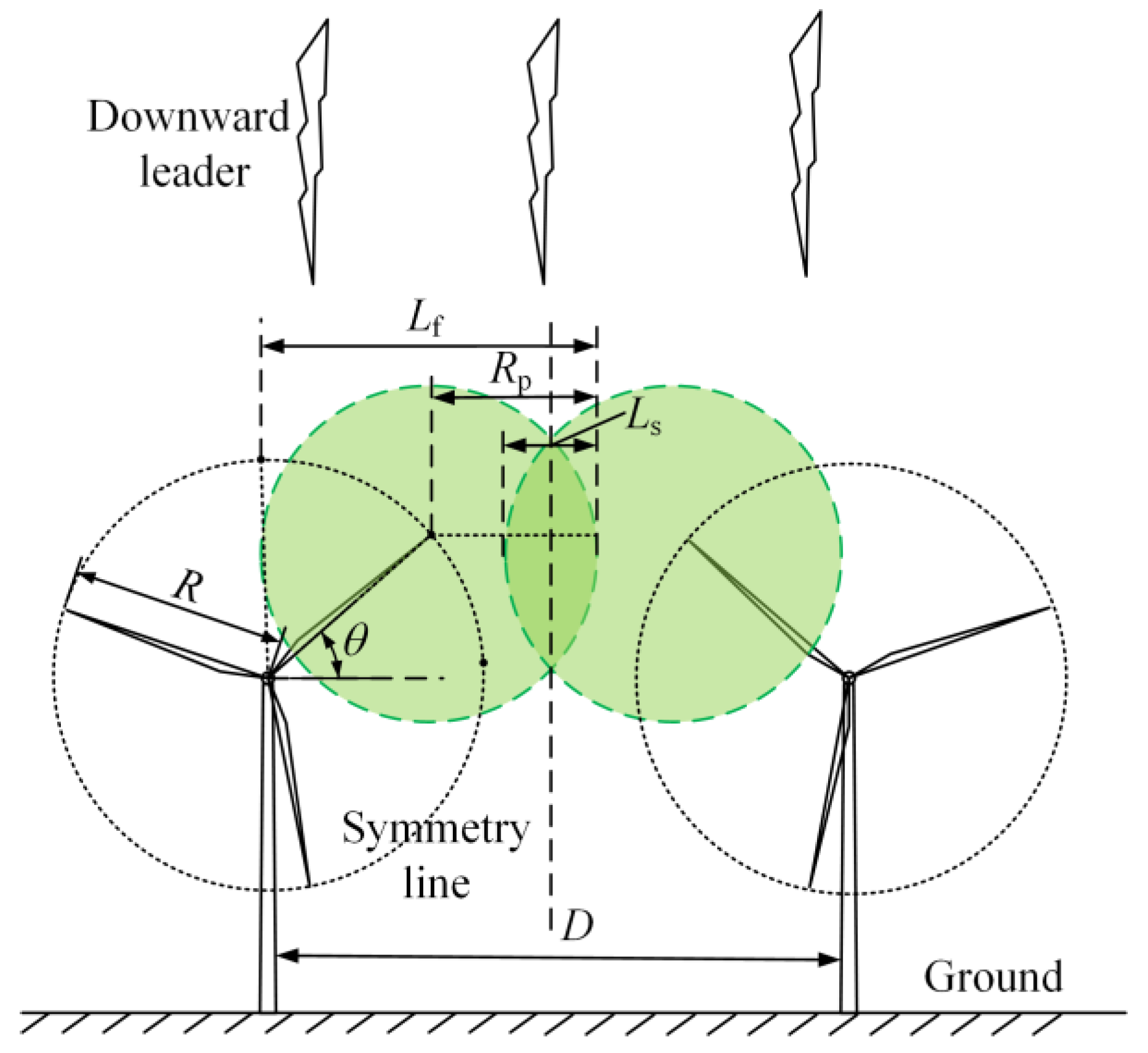
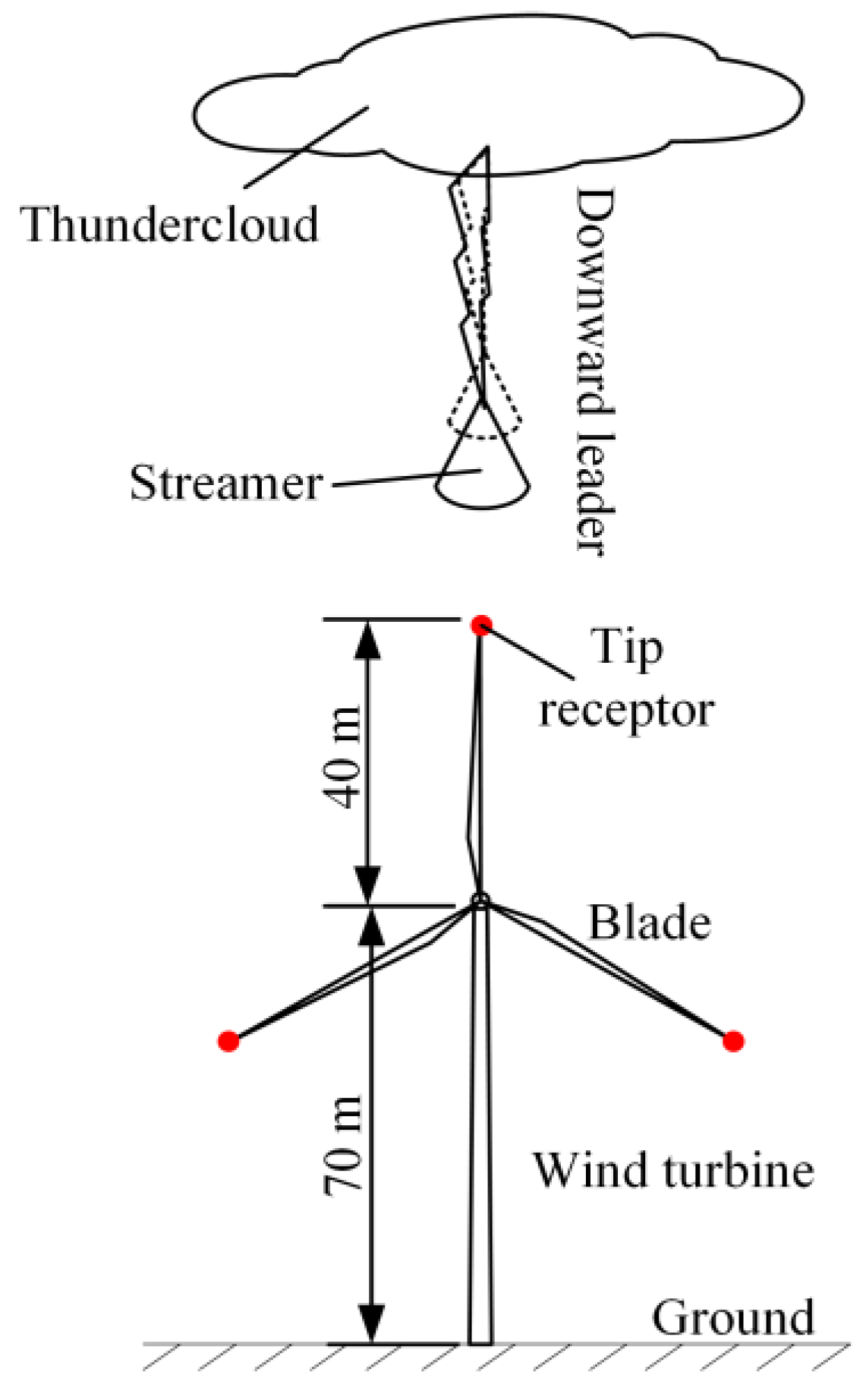

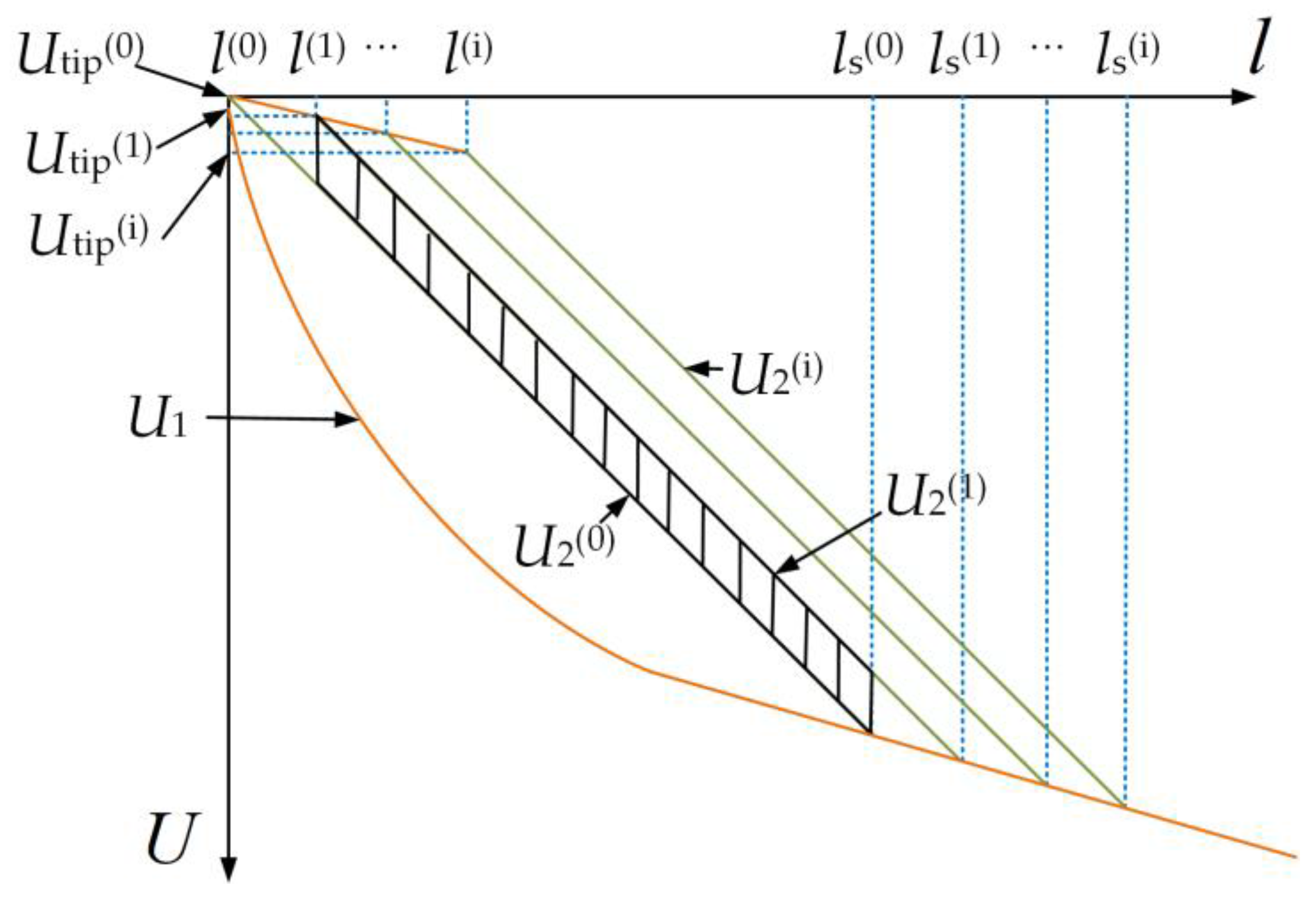
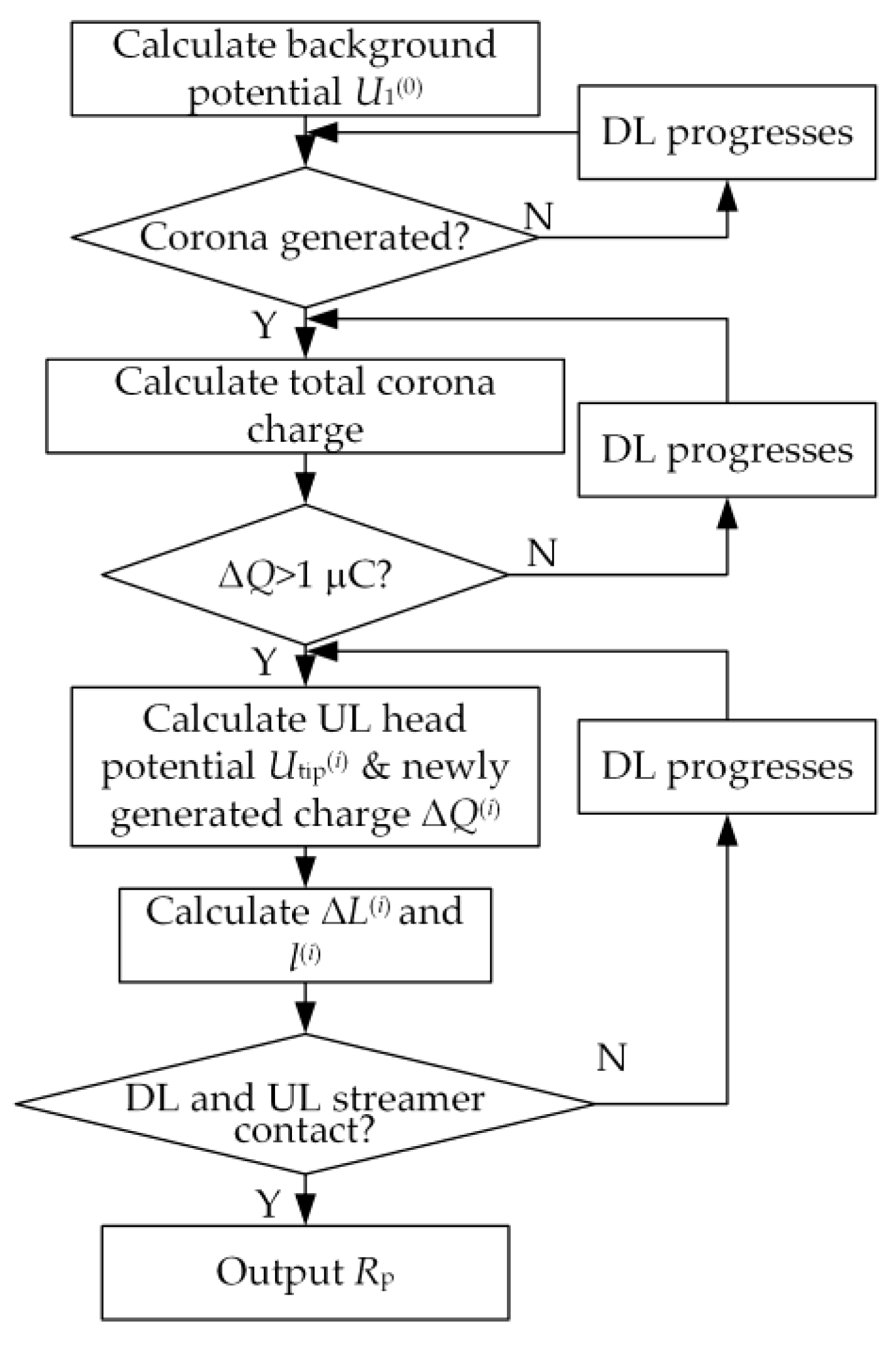

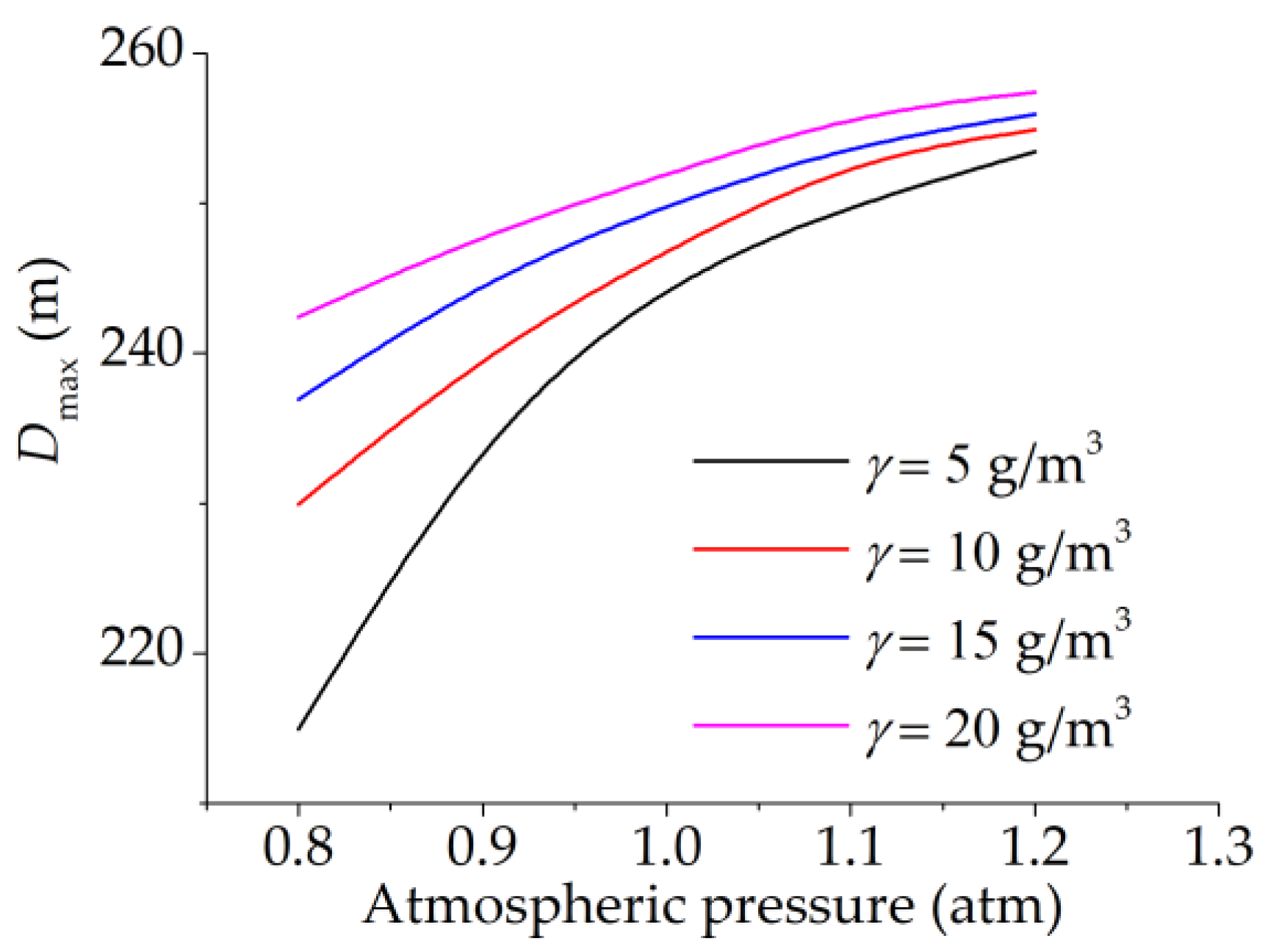
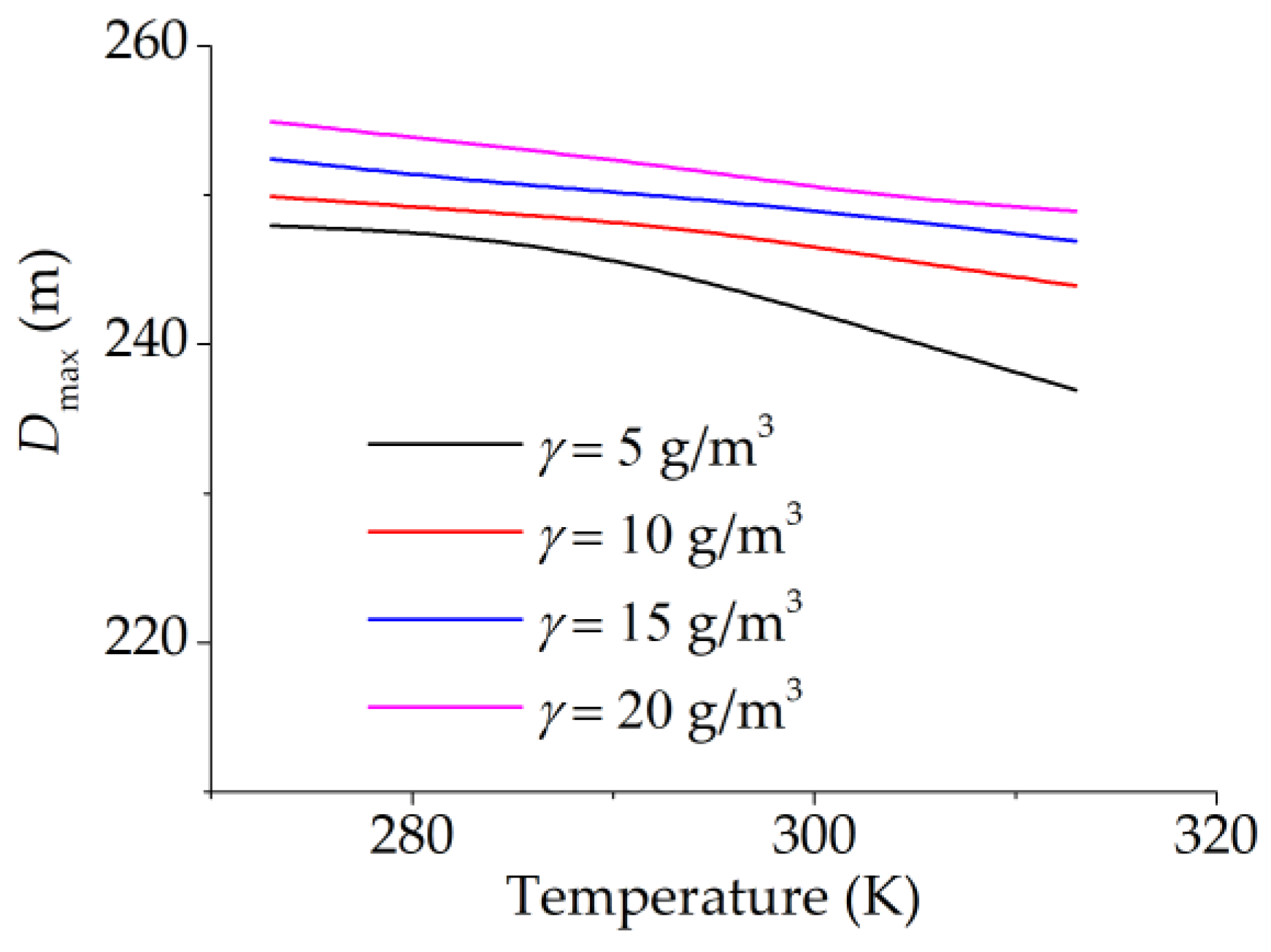
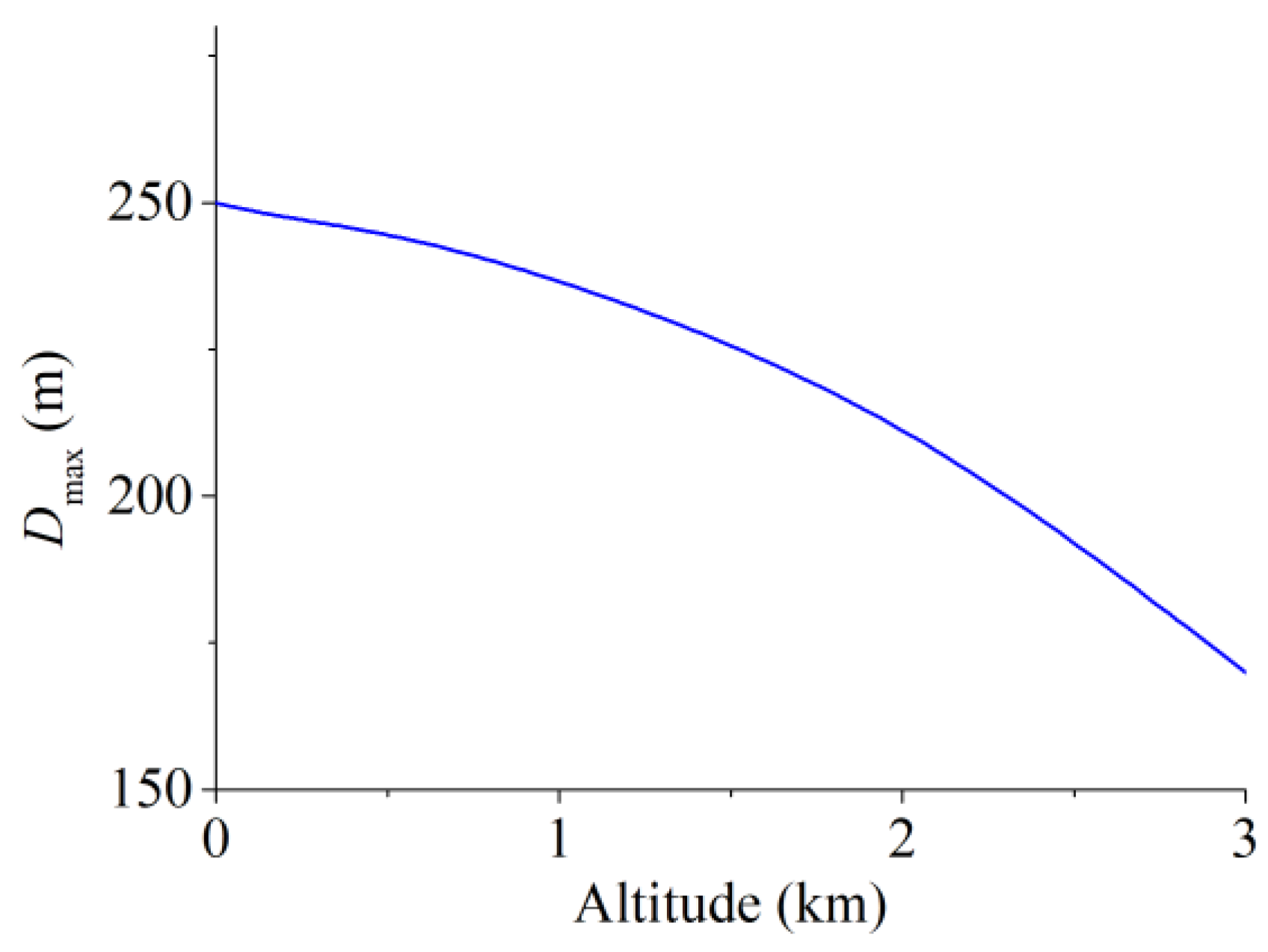

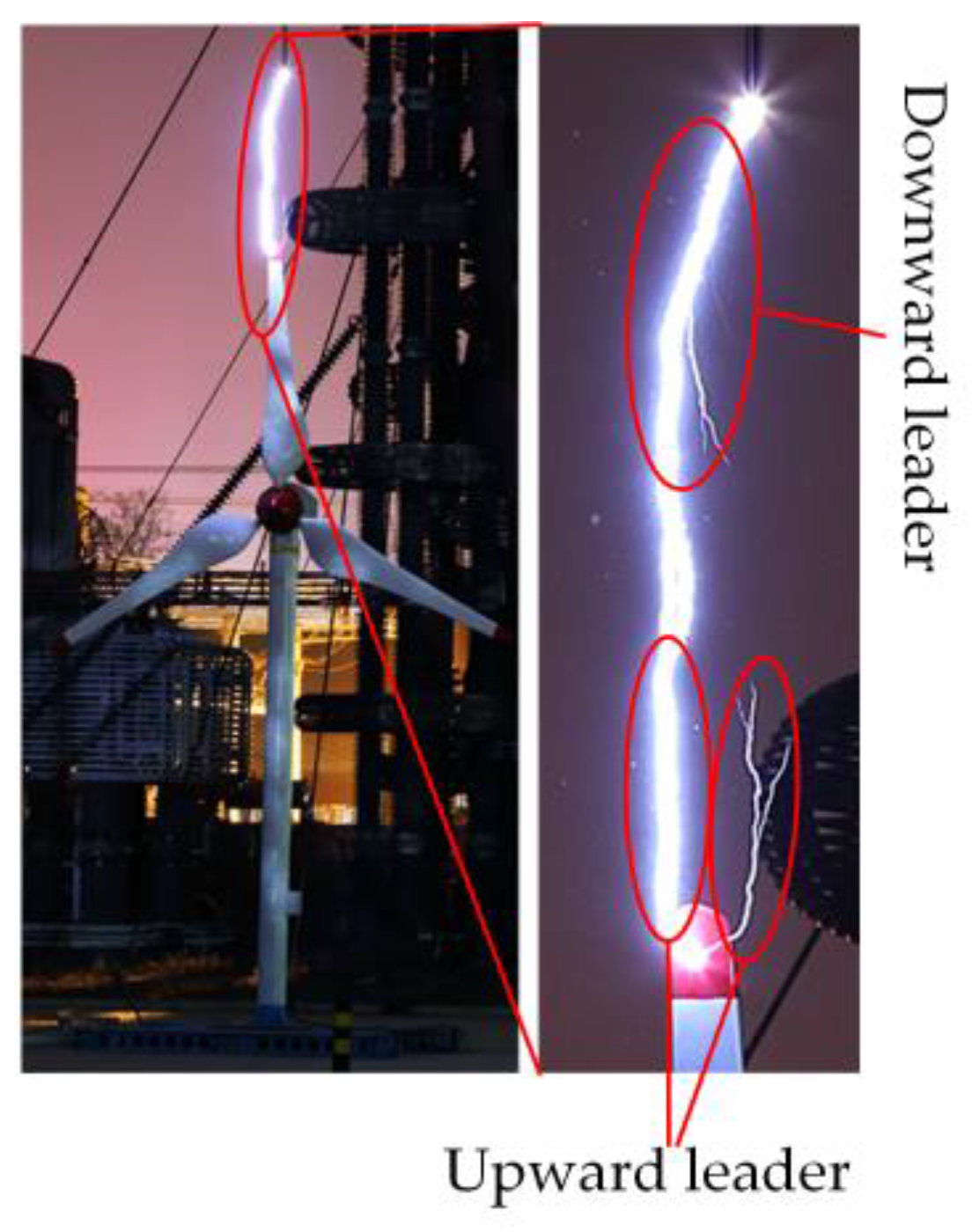
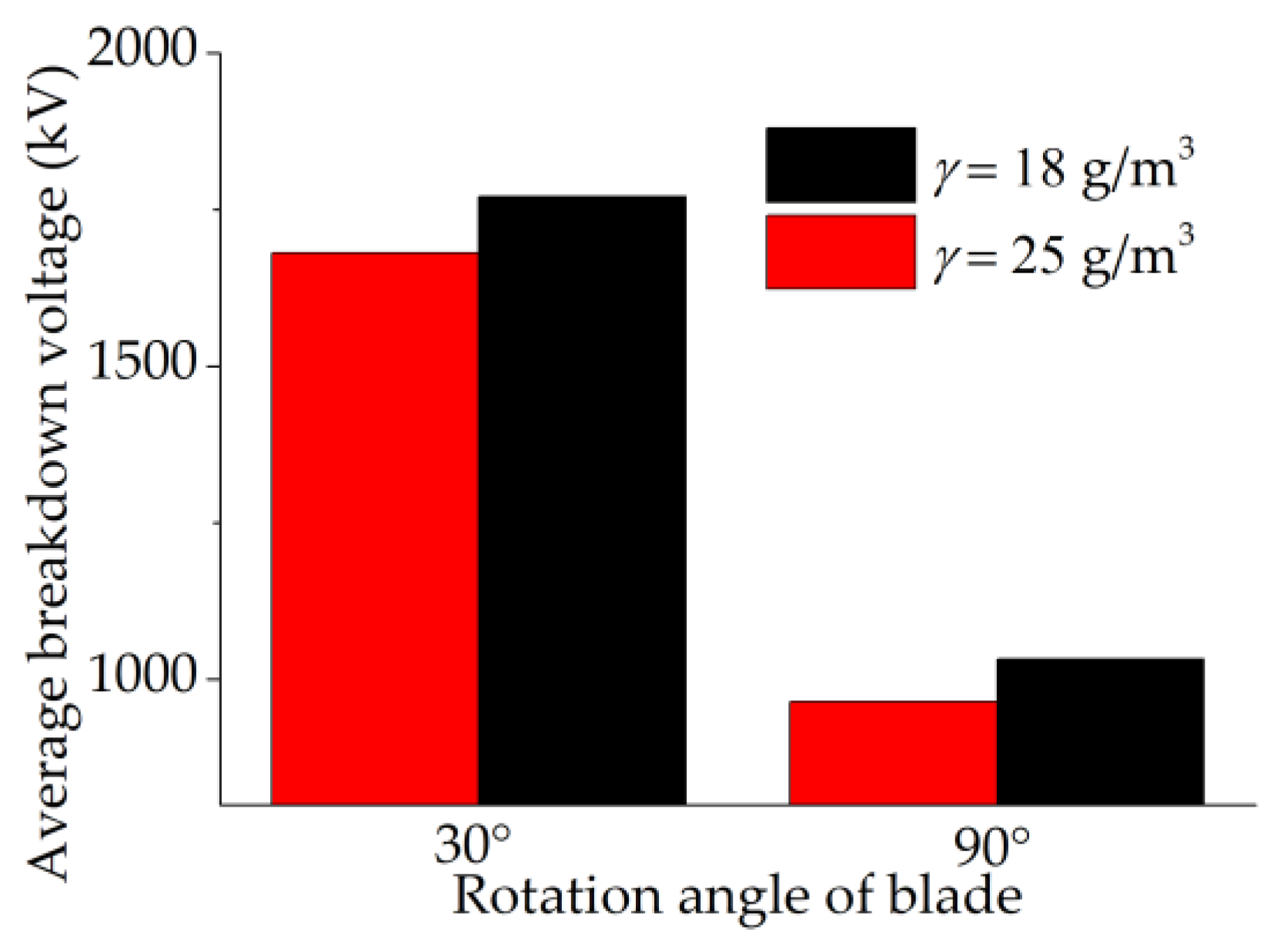
© 2017 by the authors. Licensee MDPI, Basel, Switzerland. This article is an open access article distributed under the terms and conditions of the Creative Commons Attribution (CC BY) license (http://creativecommons.org/licenses/by/4.0/).
Share and Cite
Zhang, L.; Wang, G.; Zhang, W.; Ma, Y.; Guo, Z.; Li, Q. An Electro-Geometric Model for Lightning Shielding of Multiple Wind Turbines. Energies 2017, 10, 1272. https://doi.org/10.3390/en10091272
Zhang L, Wang G, Zhang W, Ma Y, Guo Z, Li Q. An Electro-Geometric Model for Lightning Shielding of Multiple Wind Turbines. Energies. 2017; 10(9):1272. https://doi.org/10.3390/en10091272
Chicago/Turabian StyleZhang, Li, Guozheng Wang, Wenfang Zhang, Yufei Ma, Zixin Guo, and Qingmin Li. 2017. "An Electro-Geometric Model for Lightning Shielding of Multiple Wind Turbines" Energies 10, no. 9: 1272. https://doi.org/10.3390/en10091272




